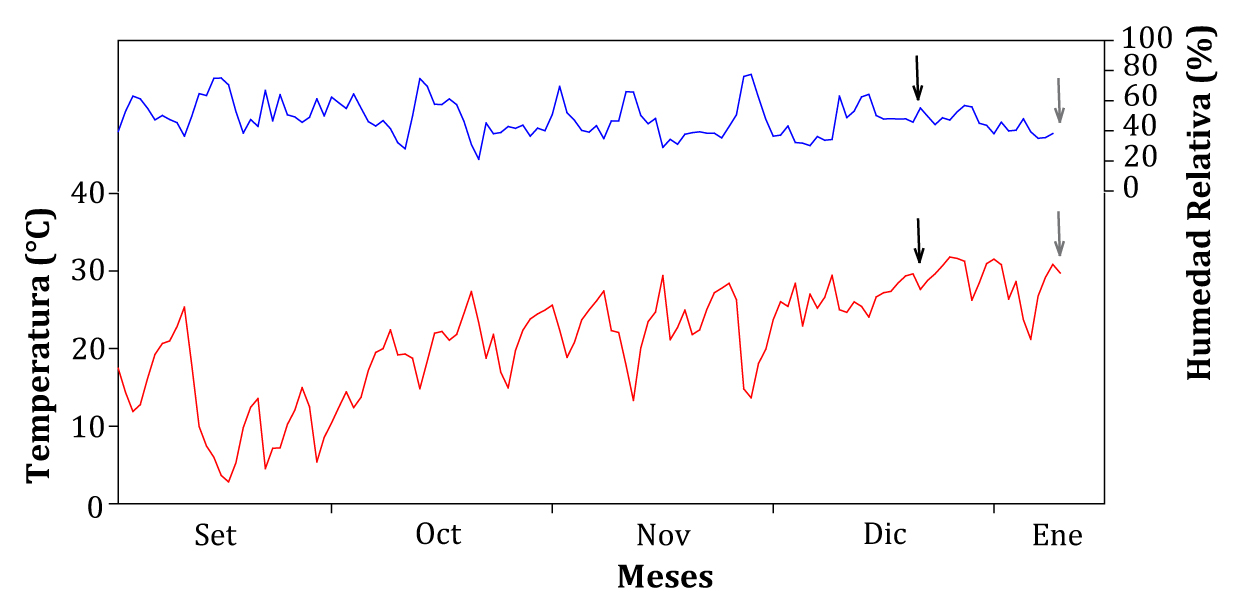Muerte foliar en plantines de Araucaria araucana (Mol.) K. Koch por efecto de temperaturas de congelamiento. Resultados preliminares
Palabras clave:
período de crecimiento, sensibilidad al frío, temperatura de congelamiento, norte de PatagoniaResumen
En este trabajo se comunica la respuesta fenológica que experimenta el follaje de plantines de Araucaria araucana sometidos a cuatro niveles de temperaturas de congelamiento (-2ºC, -6ºC, -10ºC y -15ºC), inducidas durante la temporada de activo crecimiento vegetal. Para ello se utilizaron plantines de vivero y los distintos niveles de congelamiento fueron producidos en freezer mediante control por computador. Los resultados mostraron que, a tres semanas del tratamiento térmico, el 90% de los plantines de A. araucana mantuvieron vivas todas sus hojas hasta -6ºC, mientras que al descender la temperatura del aire a -10ºC o menos, los plantines presentaron porcentajes variables de hojas necrosadas hasta muerte total del follaje. En condiciones naturales, heladas tardías en el norte de Patagonia expondrían los plantines de A. araucana a consecuencias potencialmente letales. Por ello, un mayor conocimiento de la respuesta de A. araucana a extremos de frío resulta de particular utilidad para interpretar procesos de dinámica forestal y establecer pautas de manejo y conservación frente a escenarios de cambio climático.

Descargas
Publicado
Número
Sección
Licencia
Aquellos autores/as que tengan publicaciones con esta revista, aceptan las Políticas Editoriales.



